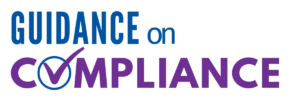Recently, the Centers for Medicare & Medicaid Services (CMS) added a “red hand” icon to the nursing facility’s profile page on the Nursing Home Compare website. This “red hand” icon indicates if a facility has been cited for abuse under Code of Federal Regulations §483.12 Freedom from Abuse, Neglect and Exploitation. Currently, there are more than 700 nursing facilities across the country who show this icon on their Nursing Home Compare profile page. As CMS explains, this icon is designed to provide consumers with an easily recognizable way to know if a facility has had issues with abuse and neglect in the past. As providers of service to residents, you must be aware of how this icon could impact your current and/or future business.
The F-Tags that would warrant the “red hand” icon would be F-Tags 600-610 which consists of Freedom from Abuse and Neglect, Freedom from Misappropriation or Exploitation, Freedom from Involuntary Seclusion, Freedom from Physical and Chemical Restraints, Development of Policies Regarding Abuse and Neglect, Reporting Reasonable Suspicion, Reporting Alleged Violations and Proper Investigation to Prevent or Correct Alleged Violations. For more information on these F-Tags, read our “F-Tags in Review: F-Tag 600-610 Abuse, Neglect and Exploitation.”
In order for your facility to remain free of the “red hand” icon, embrace these simple steps at every level of your organization:
- Review your existing policy on abuse, neglect and exploitation. Does it cover what is required in the regulation?
- Be unwavering in your implementation at every level that abuse, neglect and exploitation will not be tolerated.
- Utilize spot checks with staff to test their knowledge and ability to identify abusive acts and the ability to report the act as well as protect the resident.
- Educate, on a continuing basis, the necessity that every employee is a mandated reporter of abuse, neglect and exploitation.
- Test your process by using role-playing in the education sessions
- Leave no stone unturned when an allegation of abuse is reported. Be sure to document every step of the process and, above all, protect the resident.
- If there is a break in your process—fix it! Keep the abuse, neglect and exploitation education at the forefront of your Quality Assurance and Performance Improvement (QAPI) process.
It is vitally important that you as a provider of service takes abuse, neglect and exploitation seriously. Make this subject non-negotiable when interviewing and/or considering a new hire. Ask the pointed questions, such as “What would you do if…?” If a prospective employee does not understand or hold the care of older adults in the highest esteem, do you want them on your team?

